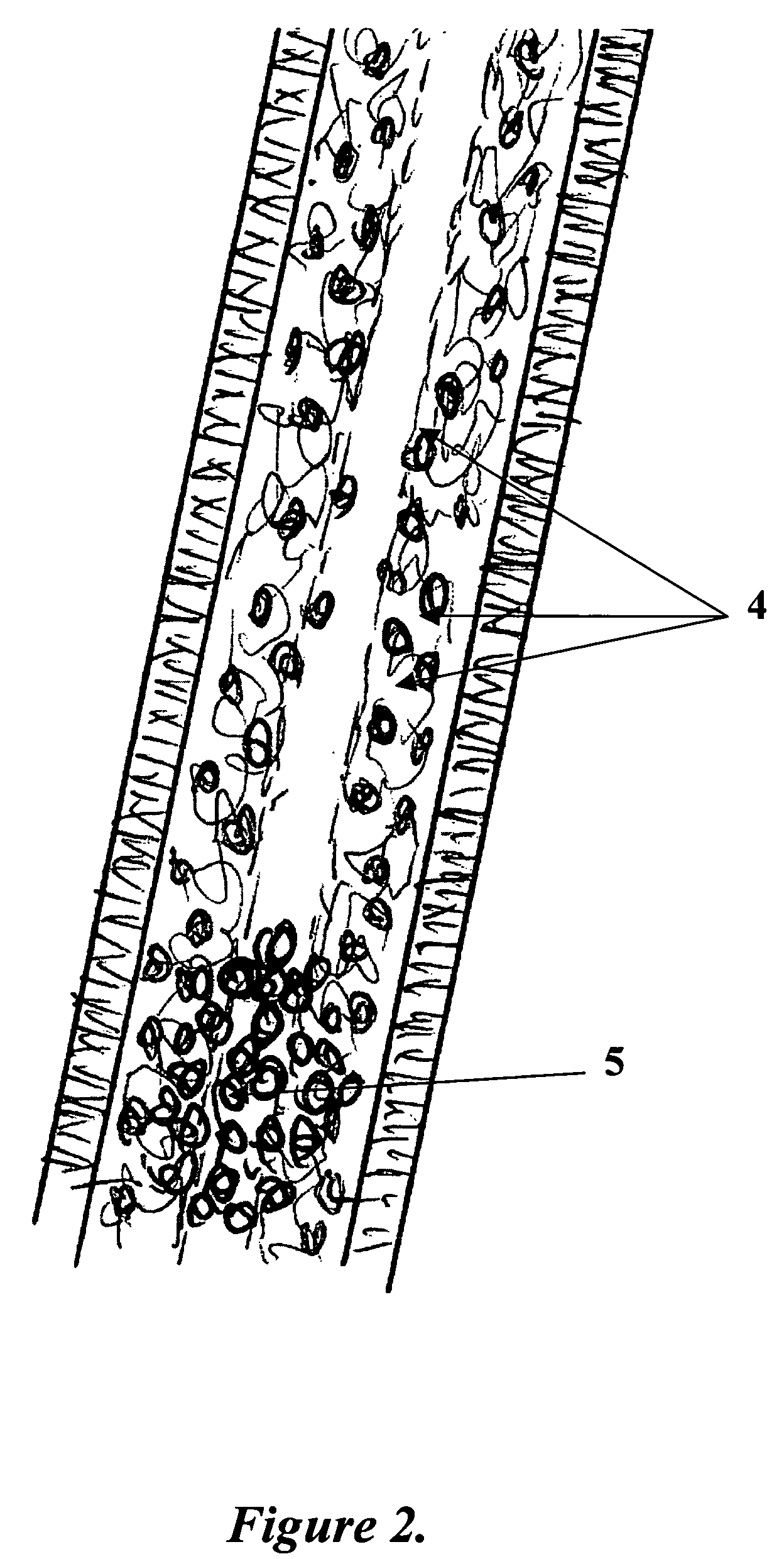Tissue engineered biomimetic hair follicle graft
a technology of stem cells and hair follicles, which is applied in the field of stem cells that engineer biomimetic hair follicles, can solve the problems of unpredictable, non-reproducible, and cultured dermal papilla cells alone, and achieve the effects of reducing, inhibiting or cureting hair loss, and restoring hair. high degr
- Summary
- Abstract
- Description
- Claims
- Application Information
AI Technical Summary
Benefits of technology
Problems solved by technology
Method used
Image
Examples
example 1
PLGA Does Not Impair Transplanted Follicle Survival and Hair Growth
[0110]A copolymer (PLGA) of d,l-lactide and glycolide (52:48) was obtained from CCA Purac Biochem by, Gorinchem, The Netherlands (Purasorb® PLGA, inherent viscosity 1.06 dl / g in chloroform) and dissolved in dichloromethane (10% w / v). Cane sugar was melted and heated until caramelized and allowed to cool to the point that filaments of the desired size could be pulled from the melt. The filaments were cooled until solidified and then immediately placed on a surface covered with powdered sodium chloride to prevent them from becoming sticky. Hollow filaments were prepared by coating the PLGA solution onto the filaments of powdered, salt-encrusted caramelized sugar. The dichloromethane was evaporated, and the sugar and salt were dissolved and removed by placing the coated filaments in water. Vibrissa (whisker) follicles were excised from euthanized C57B16 mice (Charles River) at Mercer University (Atlanta, Ga.) under an I...
example 2
Preparation of Microporous PLGA Hollow Filament
[0112]A solution of glycerol (glycerine U.S.P.) and PLGA (Resomer™ RG504, Boehringer Ingelheim, Germany) was prepared in TFE (Aldrich Chemical Co., Milwaukee, Wis.) such that the ratio of glycerol to PLGA was 80:20 (w / w). This solution was coated onto caramelized cane sugar filaments (prepared as described above in Example 1) in several layers with time allowed between coats for drying. Evaporation of the TFE, a solvent for both glycerol and PLGA, caused the concentration of the solutes to increase until glycerol no longer remained miscible. Phase separation of glycerol from the PLGA / TFE resulted in the formation of a bicontinuous emulsion. The coated filaments were then placed in water, which caused the sugar and the glycerol, as well as any residual TFE, to dissolve rapidly and leach out of the now micro-porous PLGA. The resultant porous hollow filaments were rinsed with water and allowed to dry completely in a desiccator. The porous ...
example 3
Preparation of a Hydrophilic PLGA Hollow Filament
[0113]A solution of approximately 5% (w / v) Pluronic™ F-127 surfactant (Sigma Chemical Co., St. Louis, Mo.), which is a copolymer of ethylene oxide and propylene oxide, was prepared in anhydrous ethanol with gentle heating. Hollow filaments of PLGA were prepared as described in Example 1. The clear, colorless solution of Pluronic™ F-127 was allowed to wick into one of the PLGA filaments and the ethanol allowed to evaporate completely. A drop of red food coloring dye was placed on a glass plate. A 15 mm length of the Pluronic™ F-127-treated PLGA hollow filament and a 15 mm length of the untreated control filament of the same diameter were contacted with the dye by touching one end of each filament to the surface of the liquid. The Pluronic™ F-127-treated filament rapidly wicked the aqueous dye solution through its entire length whereas the untreated filament only slowly wicked the dye into 4 mm of its length.
PUM
| Property | Measurement | Unit |
|---|---|---|
| particle size | aaaaa | aaaaa |
| particle size | aaaaa | aaaaa |
| length | aaaaa | aaaaa |
Abstract
Description
Claims
Application Information
 Login to View More
Login to View More - R&D
- Intellectual Property
- Life Sciences
- Materials
- Tech Scout
- Unparalleled Data Quality
- Higher Quality Content
- 60% Fewer Hallucinations
Browse by: Latest US Patents, China's latest patents, Technical Efficacy Thesaurus, Application Domain, Technology Topic, Popular Technical Reports.
© 2025 PatSnap. All rights reserved.Legal|Privacy policy|Modern Slavery Act Transparency Statement|Sitemap|About US| Contact US: help@patsnap.com



